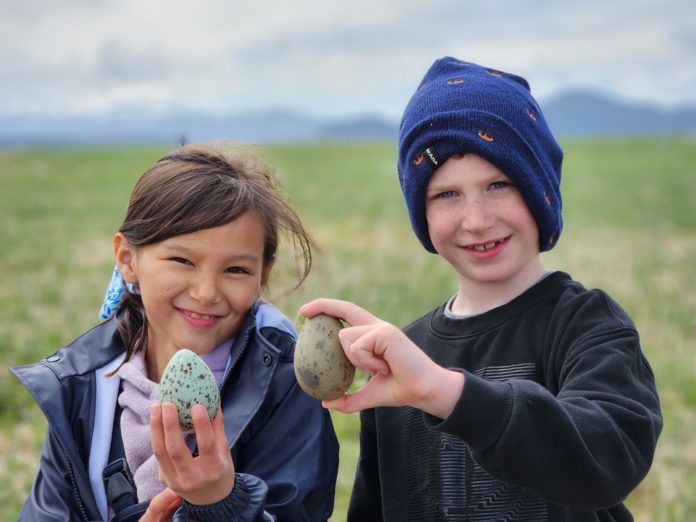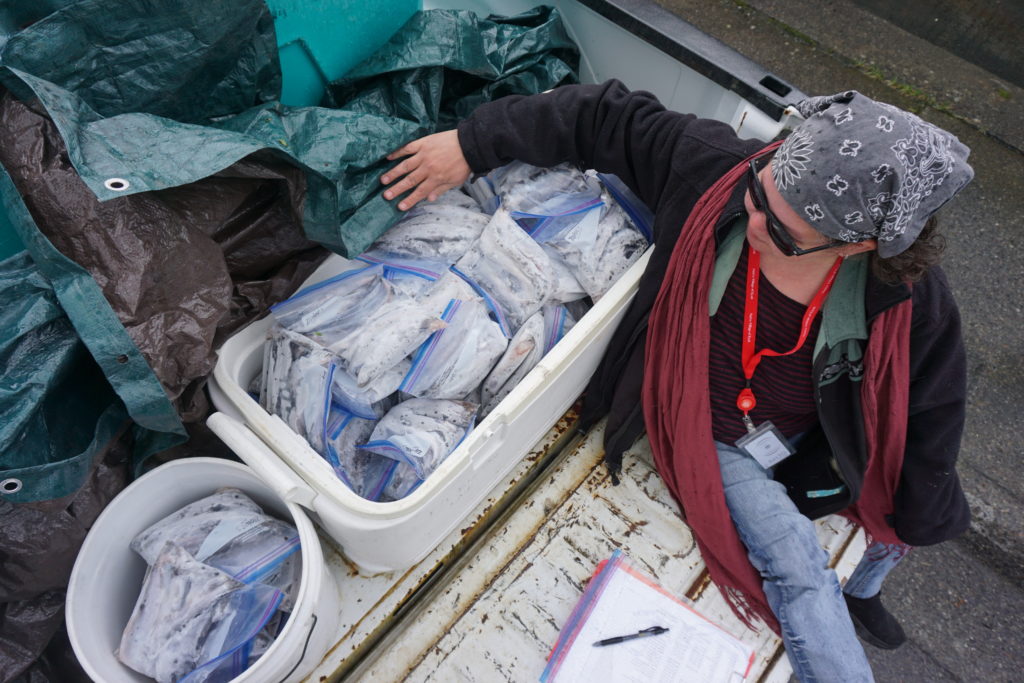
The Native Village of Eyak (NVE) harvested and distributed seagull eggs and hooligan to tribal members this past week as a part of its traditional foods Subsistence Program.
On May 23, seagull egg packages were given to approximately 40 tribal members on Main Street. Packages consisted of a bag containing three gull eggs cushioned by a handful of native grasses found near nest sites. Each year in the spring, Glucose-winged gulls nest on the ground amongst the sand bars of the Copper River Flats. This large concentration of gulls, each of which will lay a clutch of three eggs, provides ample spring harvest opportunity.
A group of tribal members led by NVE staff journeyed to the Flats last week to harvest the eggs using traditional knowledge.
“Our ancestors knew how to harvest the eggs sustainably,” Danaya Hoover, NVE cultural director explained. “If there’s three in the nest, let it be. If there’s two or one you can harvest from that nest. The seagull will return and continue to lay until there is a clutch of three – up to 16 times.”
The primary goal of the subsistence program is to provide food security for the tribal community, especially elders who may have trouble accessing resources on their own. These seasonal foods can in many ways become a celebration of cultural values and history.

Hoover explains the importance of harvesting and eating traditional foods: “It’s passing on traditions and knowledge and caring for our culture in that way.”
The spring harvest season began with herring eggs this past March, followed by gull eggs, salmon, and hooligan. Foods are harvested by NVE staff and any tribal members who wish to join the forays. Both elders and younger tribal members participate.
“Elders are our culture bearers and have that information to share, and then kids get to learn and grow up and continue to share,” Hoover said.
She says there is a mental health aspect to the Subsistence Program as well.
“(The food) is healthy for you, and it’s good for your mental health to get out there and do these kinds of activities and get back into nature,” she said.
Natalie Webb is the new traditional harvesting coordinator at NVE’s cultural department. Webb agrees that the value of encouraging traditional harvest is both enjoyable and educational for tribal members.
“You get to be out and see the environment and learn more about where you live,” she said.
Webb oversaw distribution of the spring subsistence packages on Main Street and says any food that doesn’t get distributed is used by NVE’s programs in other ways.
“We are making some mayonnaise out of the eggs and trying out new uses,” she said.
She says that the Cultural Program would like to expand its offerings to members with how to process and use traditional foods.
“We want to do some filet classes, because a lot of people don’t know how to filet a fish and they want to learn,” noting that classes such as these would help equip tribal members with the knowledge needed to continue subsistence activities on their own.
NVE also empowers tribal members to harvest subsistence fish through proxy permits, as well as by providing trips on subsistence openers on a bowpicker vessel operated by tribal member Mark King. These resources ensure that tribal members can enjoy traditional subsistence foods even if they cannot afford the fuel for a fishing trip.
Webb says the only limitation for the subsistence program to grow in scale is time. Much of the harvesting occurs during the busy summer months in between fishing openers. To this end, the Cultural Program encourages any tribal members who are interested to sign up for the next foray trip. Tribal members interested in this program can contact Webb at 907-424-3100.





